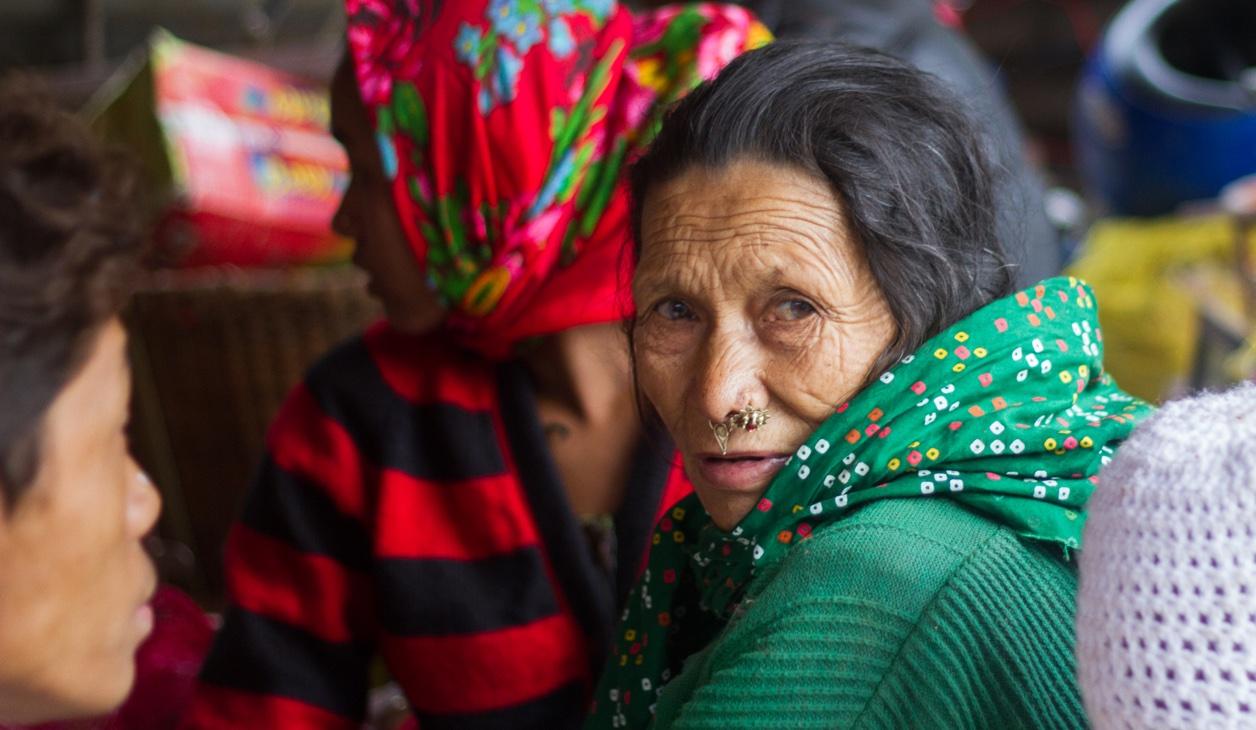Villages just hours from Kathmandu are still waiting desperately for aid
An elderly woman sits under a tarp, trying to stay dry in Ghyangphedi, Nepal.
GHYANGPHEDI, Nepal — In this village on the southern edge of Nepal’s Langtang National Park, people are desperate.
It’s been four days since a 7.8-magnitude earthquake destroyed nearly everyone’s homes. But relief has yet to arrive.
“If we don’t get food, we will die,” said Prikash Tamang, whose son died when his house collapsed.
The water they usually drink from a nearby stream is filled with mud from landslides, and the entire village — about 150 people live here — now huddles under two large tarps, waiting for help. Most of the people sat with stunned looks, trying to stay out of the afternoon downpour. It’s rained nearly every day since the earthquake.
The food supply is running low. Biscuits and ramen salvaged from a shop sit piled under another tarp, but the villagers worry that they only have enough for two or three days at the most.
“The people need food, they are starving,” Pantos, a local teenager, said.
When the earthquake first hit, it killed five people in Ghyangphedi, a picturesque mountain valley. The total death toll in Nepal now exceeds 5,000. Aid groups say that number could still rise as rescuers begin reaching remote villages like this one.
Unlike in Kathmandu, most people here were outside working in their fields when the earthquake struck, which minimized the loss of life. The survivors quickly dug out their family members who died, grieved, and then burned their bodies.
Then came their struggle for survival.
More from GlobalPost: If you want to help people in Nepal, send money, not stuff
An army helicopter briefly landed a day after the earthquake and evacuated the most severely injured. But since then, no government or international aid groups have returned to the isolated village. It is only about six hours away from the capital city of Kathmandu, but several landslides are blocking the road. Right now, it is accessible only by foot or helicopter.
“We are feeling lost,” said Karmajit Tamang, a village leader who is trying to organize the people to better survive. “We don’t know what to do.”
This village is only one of hundreds cut off from relief supplies. In this corner of Nuwakot district, about 6,000 people need basic supplies. UN officials say this number could be as high as 1.4 million across the country. On Wednesday, frustrated survivors took to the streets in Kathmandu to protest the slow pace of aid deliveries — some even clashed with riot police.
As the days pass and the frequency of aftershocks diminish, the survivors are beginning to face new kinds of danger. Sickness, exposure, and starvation are threatening thousands.
The country’s mountainous regions may have been hit the hardest. Most of the buildings in these areas are made of rock and mud, and had no chance of withstanding the earthquake. The region is also still under threat from landslides set off by aftershocks and incessant rain.
“We need tarps and food, that is all we can ask for right now,” Tamang said.
A representative of the Nepal Red Cross Society said earlier that rescue workers had hoped to reach the remote mountain regions within the next day. But at nightfall on Wednesday, locals said by phone they had still not received anything.
